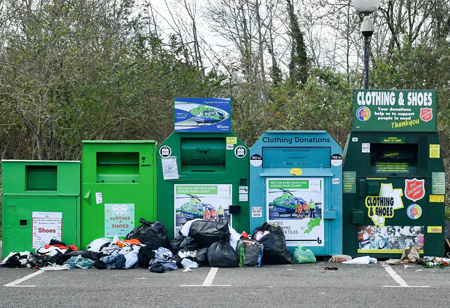THANK YOU FOR SUBSCRIBING
Be first to read the latest tech news, Industry Leader's Insights, and CIO interviews of medium and large enterprises exclusively from Gov CIO Outlook
THANK YOU FOR SUBSCRIBING

By
Government CIO Outlook | Tuesday, January 19, 2021
Stay ahead of the industry with exclusive feature stories on the top companies, expert insights and the latest news delivered straight to your inbox. Subscribe today.
Correctional facilities are transforming the way they approach waste disposal, and these changes will require innovative waste-handling solutions.
FREMONT, CA: Correctional facilities are changing the way they approach waste management, and these changes will demand new waste-handling solutions. Evolving trends include facility-wide recycling means and the composting of food waste. These practices generate less waste and, therefore, fewer costs connected with managing the waste. That means investment in ergonomic tools that will keep prison staff and inmates safe and free from musculoskeletal injuries. Read on to know more,
The waste produced by that state's correctional facilities is to be managed well. The leading type of solid waste is paper, representing nearly 40 percent of the waste coming out of Florida's prisons. Paper is also one of the easiest materials to recycle. The only hurdle is how to get large volumes of paper waste from the source to the recycling center. The first step is to gather paper waste into the recycling service's hoppers or roll-off dumpsters.
Washington state was a very early adopter of this trend. They've been composting food waste from prison meals. The composting tasks offer prisoners valuable job training and jobs during their incarceration. Inmates utilize the compost in on-campus gardens, and in turn, kitchen staff gathers the fruits and vegetables to make fresh, healthy meals. Of course, industrial composting programs need equipment. When inmates are the employees, the state has a responsibility to keep them safe. This technology is the ideal waste-handling solution for correctional facilities across the nation.
The goal of jails and prisons is to protect society by confining offenders in controlled environments that are safe, secure and offer programs to help incarcerated citizens become law-abiding citizens. Jails are twenty-four hour, seven days a week operations conventionally not considered a mainstream business, and these facilities' function is not usually in public view. The prison and jail population nationally is about 2.2 million. Based on many men and women who resided in state and local facilities and absented a transformation in a social circumstance, jails and prisons are not going away.
I agree We use cookies on this website to enhance your user experience. By clicking any link on this page you are giving your consent for us to set cookies. More info

However, if you would like to share the information in this article, you may use the link below:
www.govciooutlookapac.com/news/improving-waste-management-in-correctional-facilities--nid-1204.html



